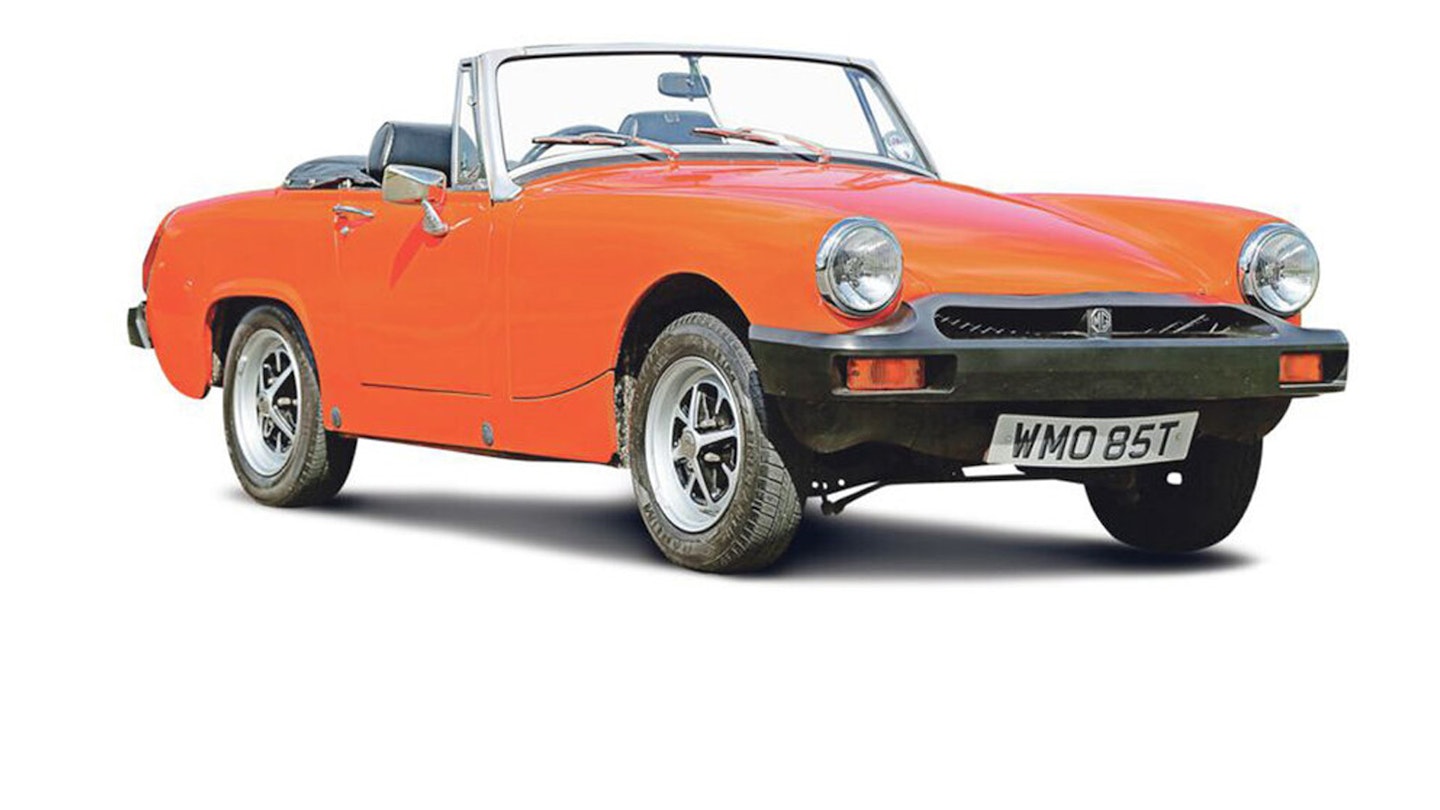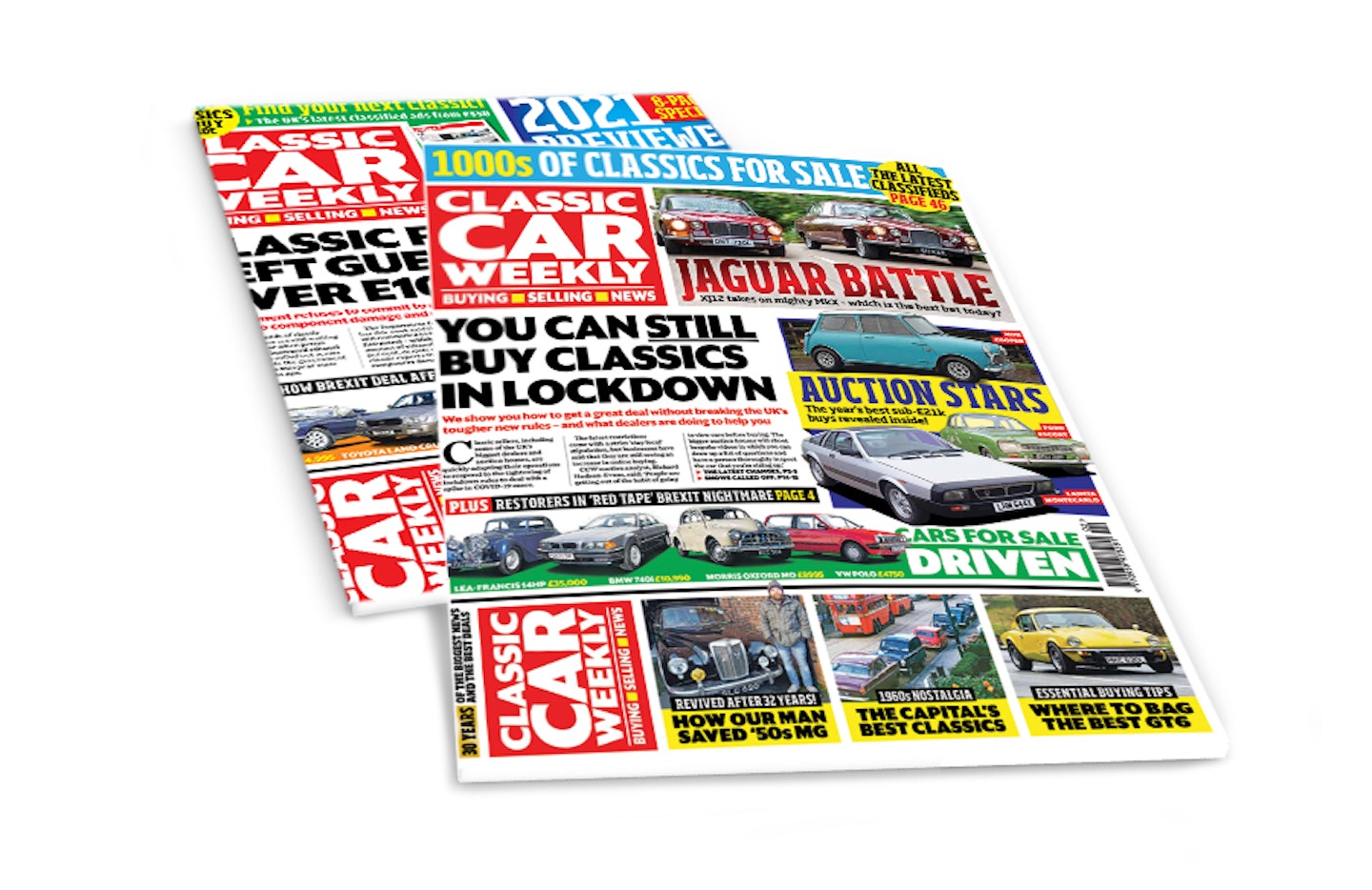Not as under-valued as they once were, late Midgets offer tons of pleasure and minimal financial risk
MG Midget 1500 (1974-1980):
Engine: 1493cc/4-cyl/OHV
Power: 71bhp@5000rpm
Torque: 82lb ft@3000rpm
0-60 mph: 12.3s
Fuel consumption: 23-30mpg
Transmission: RWD, four-speed manual
Classic roadster lovers have been rather slow to lavish their affection on the final iteration of MG’s perky little Midget. Like the late rubber- bumper MGB, the pedestrian- friendly Midget isn’t quite as charming as its sparklier predecessors (or its Austin-Healey Sprite cousin) so it’s those cars that have enjoyed most of the appreciation. 1500s are cheaper – much cheaper – but that alone doesn’t make them a good option as a ‘cash-free’ classic.
Because late Midgets have less appeal to the kind of chrome-collecting aficionado who will pay a strong premium for an original car, you don’t need to worry too much about total originality when it comes to selling to recoup your money. Instead, solidity, smartness and overall performance are what buyers will want. In other words, you can use the car to the full with minimal risk of hurting its value. After all, driving pleasure is what it’s all about. In good health, the 1493cc Triumph motor (torquier than its A-series predecessors) can send the Midget buzzing to more than 100mph, and the all- synchromesh gearbox is tougher than those fitted to earlier Midgets. You can buy a Midget 1500 for less than £3000, but spending just a little bit extra should get you a much stronger car that’s less likely to require big expenditure – especially when it comes to welding.
What Should You Check?
1 - How’s The Engine?
Emulsion under the radiator cap suggests cylinder head/ gasket failure (or condensation from under-use), while blue exhaust smoke often means imminent expense. Avoid any car with rumbling big ends because they’ll need replacing soon – fine if you’re in it for the long haul, but no use if you’re after a quick, pain-free turnaround.
2 - Inspect The Body For Rust
Any half-decent Midget has probably been welded, so work out where and use a magnet to check for filler. Sagging doors may signify major structural issues – not just worn hinges – so be picky. Sills, wheel arches and floors are the worst areas, but rust can take hold anywhere. Rear spring mounts rust badly, and are particularly costly to put right.
3 - Has Water Crept Inside?
Most interior parts can be replaced – not that there’s much to go wrong. Water ingress is the main thing to look for, so the hood must be intact and fit snugly. Replacing the wiring loom might only cost you £350 if you’re willing to do it yourself, but the quality of some new electrical items is highly variable, making originality particularly attractive.
4 - Try The Transmission Out
Oil seepage from the gearbox or diff’ should only be forgiven if the seller can confirm regular topping- up. Avoid examples that jump out of gear, as the problem will get worse. So too will any whining or excessive slack in the transmission ‘downstream’ of the gearbox. However, remedies aren’t expensive and recon ‘boxes are just £600.
5 - Watch Out For Neglect
Beware multiple weaknesses signifying lazy maintenance – what else has been ignored? – but cheap fixes that improve the ride (for example, tired bushes and shocks) might recoup your costs when you come to sell. Kingpins wear unless frequently lubricated and inspect the leaf-springs for splayed ends, cracks or corrosion.

